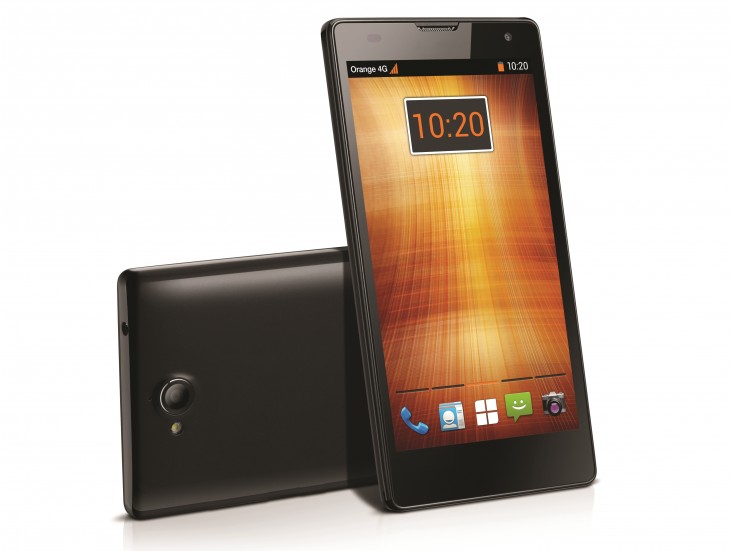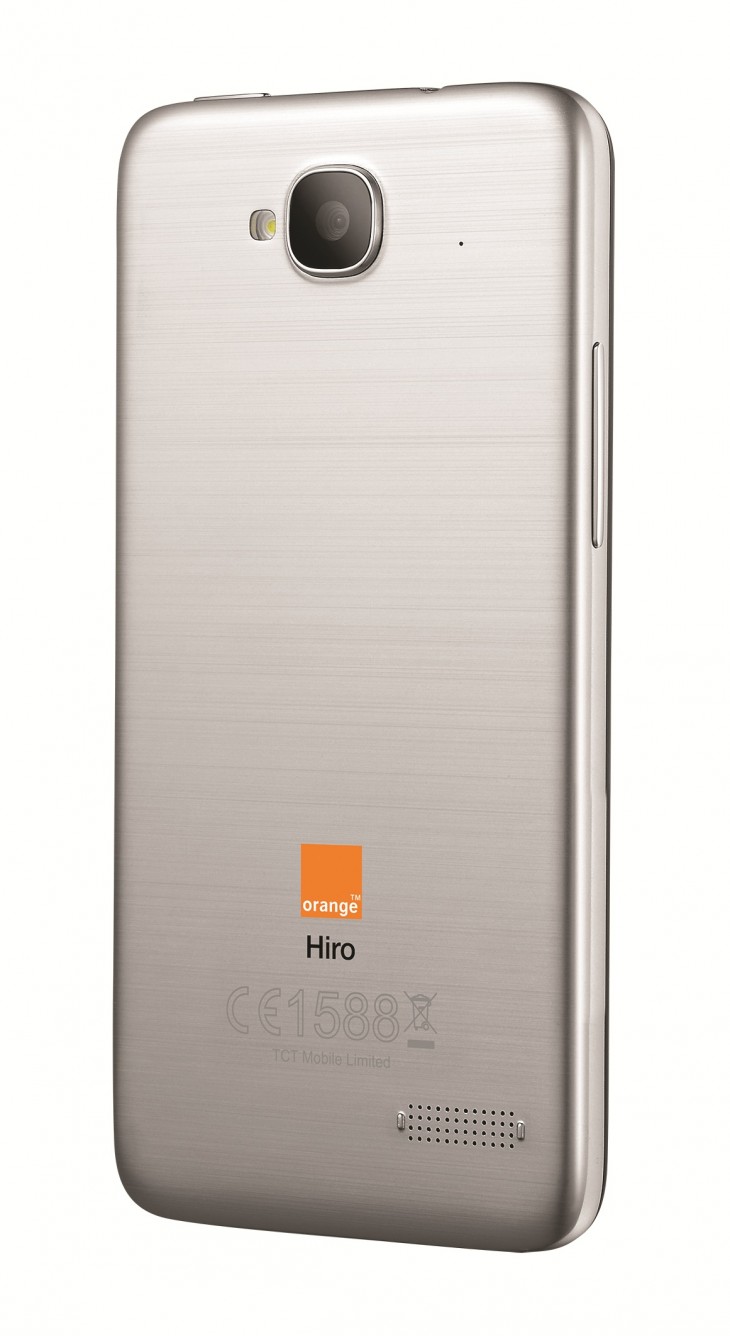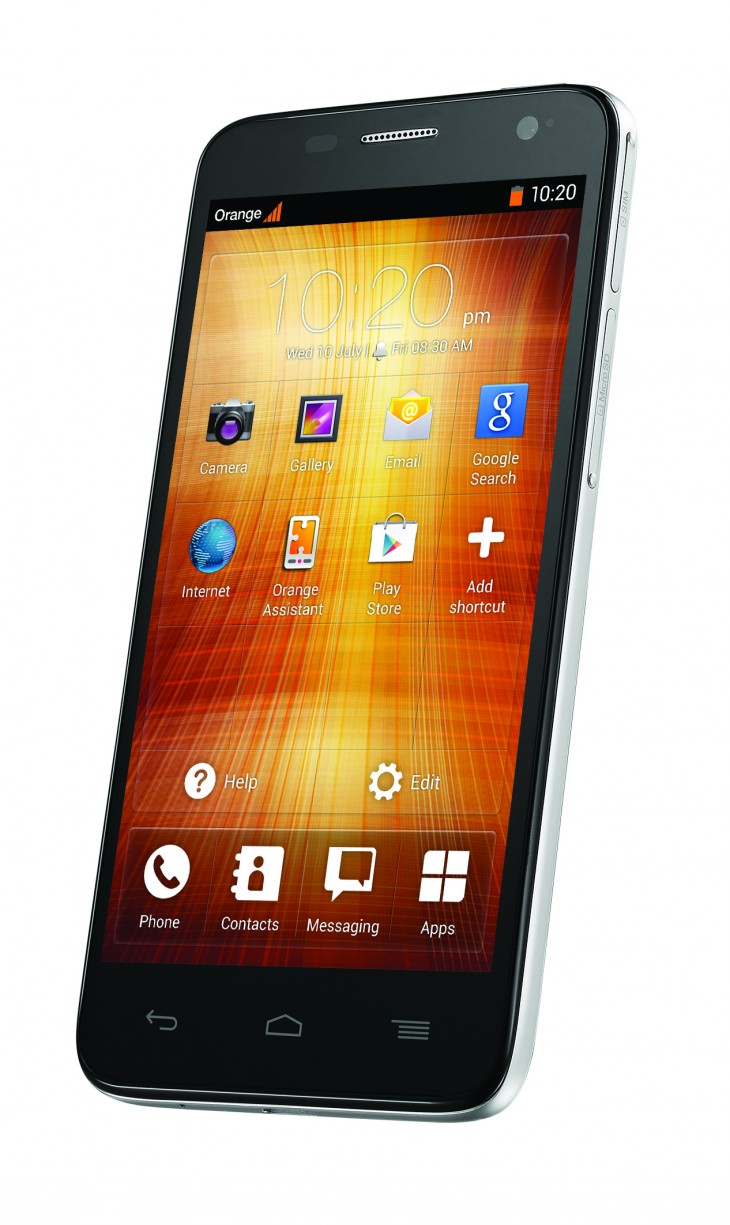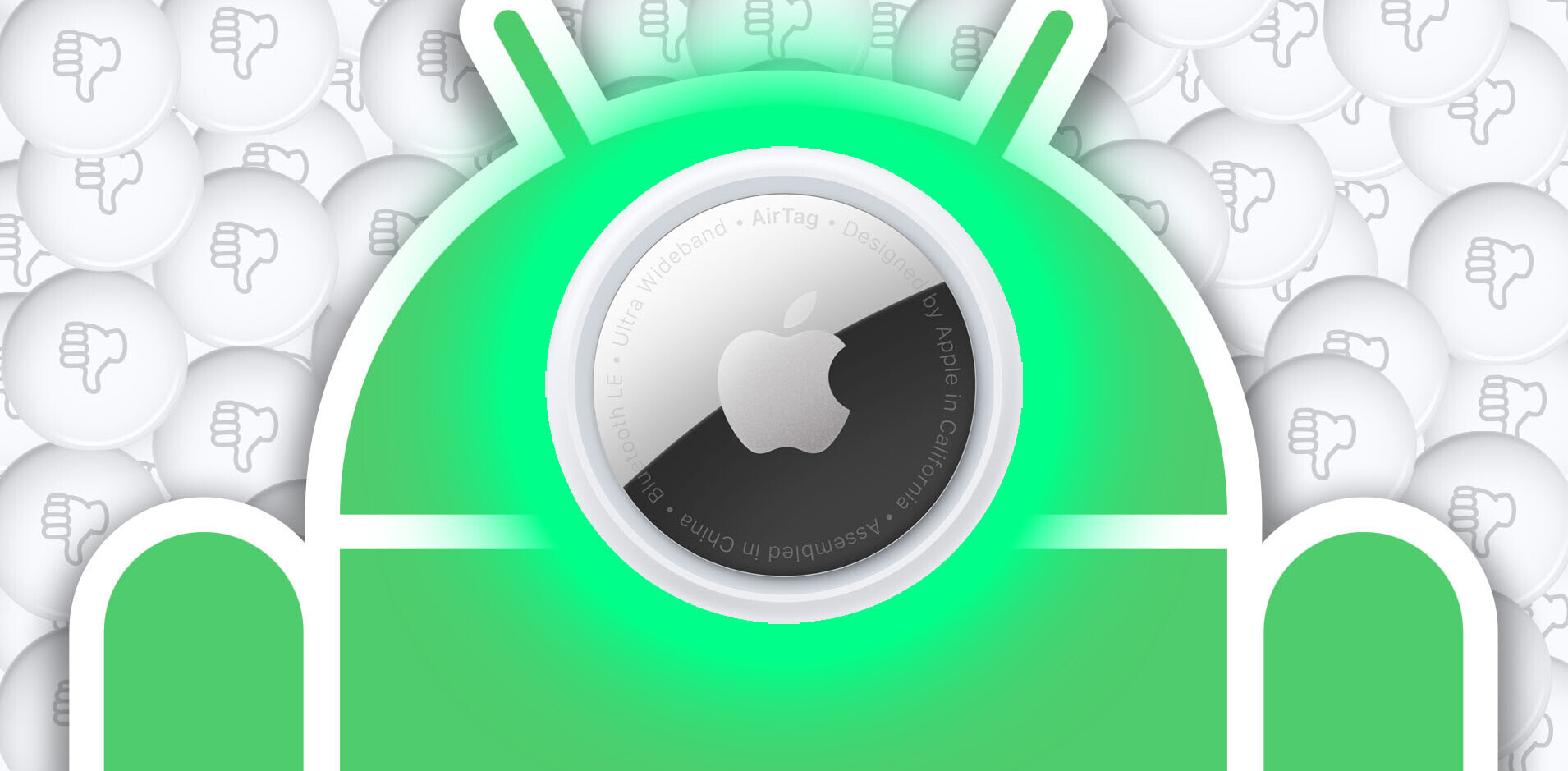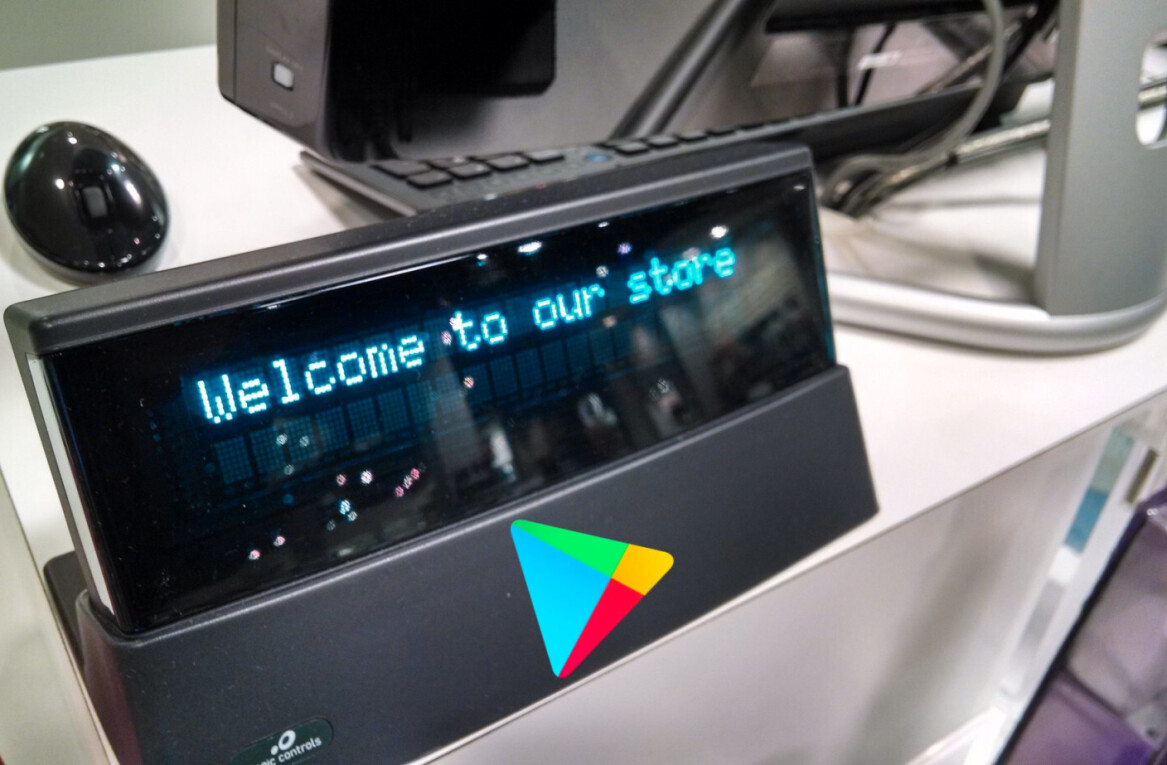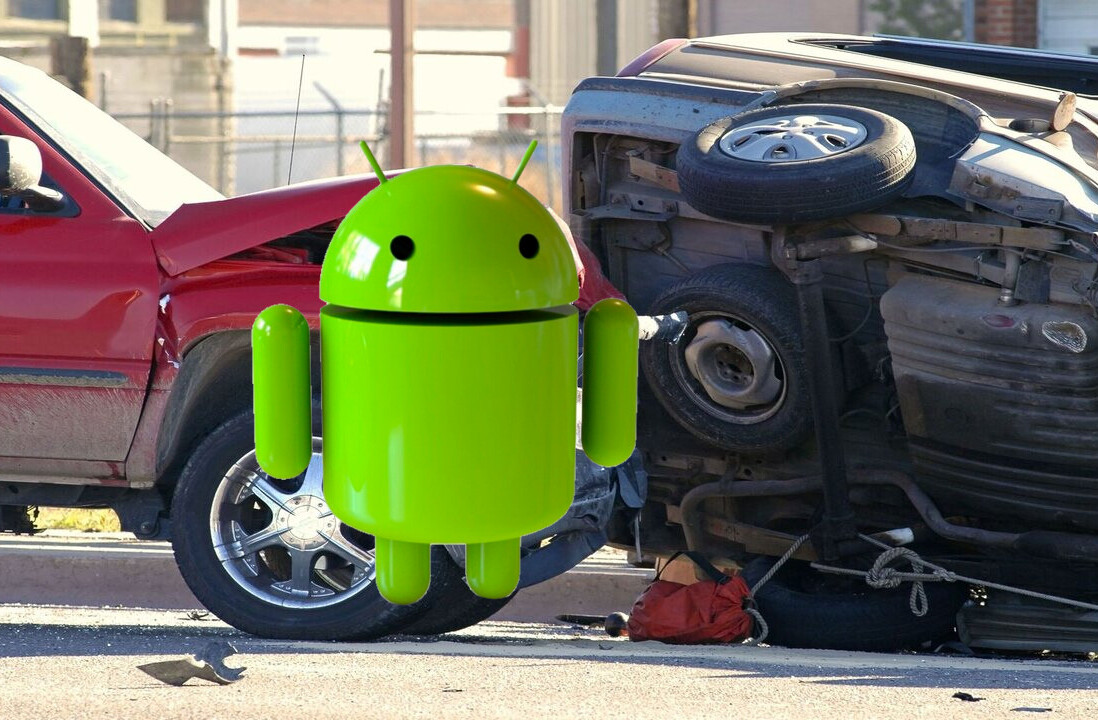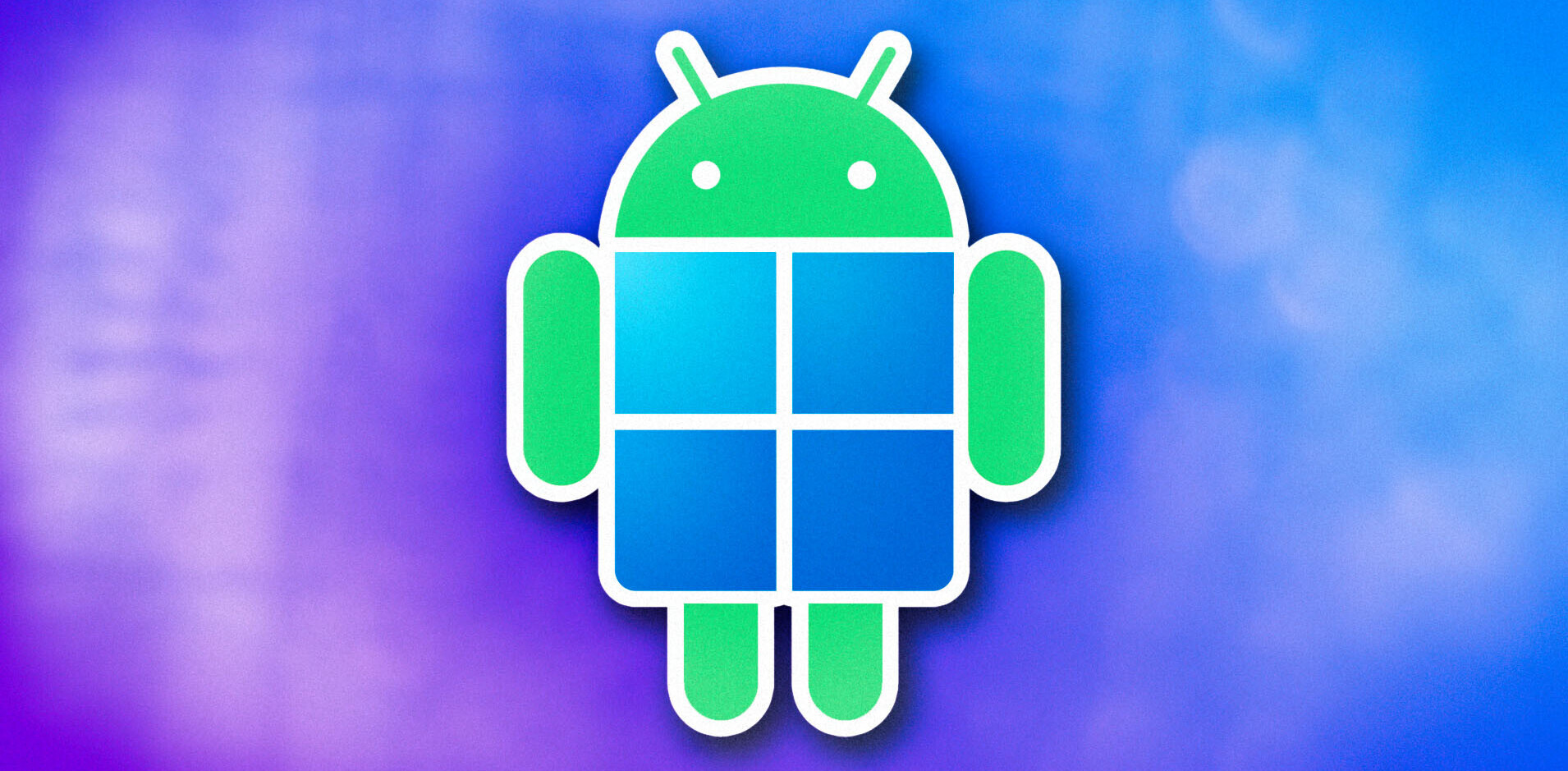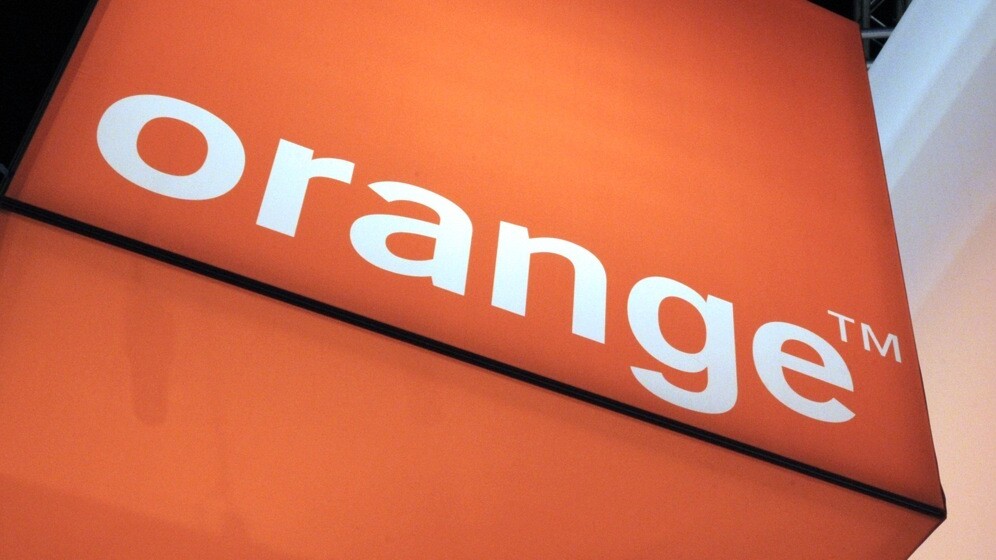
Orange has launched two new own-brand handsets for the European market, but UK dwellers will miss out on the relatively low cost devices.
The better specced of the two, the Orange Yumo, will offer a 1.2GHz dual-core Qualcomm processer, 8GB of internal storage (expandable via microSD) and a 5-inch (1280 x 720 pixels) HD display.
There’s also an 8-megapixel snapper on board capable of capturing 1080p video at 30fps and, perhaps more impressively considering its price point, 4G connectivity.
It’ll arrive running the slightly older version of the Android Jelly Bean OS, version 4.1.2.
Due to go on sale from November, beginning in Spain, the Yumo will cost €215, including all relevant taxes.
Moving to the slightly smaller of the two devices, the Hiro.
While it doesn’t offer 4G connectivity like its larger sibling, it does provide a 4.3-inch (854 x480 pixels) display, a Mediatek dual-core 1.3GHz processor, 4GB of storage (with additional microSD slot) and a 5-megapixel camera.
It also runs a slightly newer version of the Android Jelly Bean OS (4.2).
The Hiro is due to go on sale in November, with variable pricing according to location. Yves Maitre, Senior Vice President of Multimedia and Devices at Orange, told The Next Web that it would generally go on sale for around €100 including tax but that it will go on sale first in Romania, priced at around €160.
Aside of the core specs, both devices offer some Orange software tweaks, such as an optional simplified UI mode (shown above), Orange Gestures and Orange Assistant.
The simplified UI mode and Orange Assistant have both been put in place to help people new to smartphones get up to speed – with the former cutting back on the number of options available from the home screen and the latter guiding users through the set-up process first time they use the handset. It also continues to offer hints and tips about other features once set up, should you wish.
However, even though the handsets promise to offer good value for money on paper, they won’t be headed to the UK. The reason: with smartphones heavily subsidized and the true cost buried in the contract pricing, it’d be hard for either to compete with the premium brands for only a few pounds difference each month on the sticker price.
Maitre explained:
The target is really not to compete with people like HTC or Samsung. The market in the UK is heavily subsidized…When you go to Spain it’s not subsidized anymore, if you go to Romania it’s a mixture of subsidized and unsubsidized.
Those markets have more of a price transparency and [customers] may be more keen to look at an Orange phone instead of another phone. It’s not a question of competition in terms of who has the best figures, it’s positioning based on the type of market we’re dealing with.
One of our targets is to challenge those brands not in terms of brand positioning, but in terms of innovation and show our customers that Orange is an innovative brand.
While the arrival of two more Android based, network branded handsets is unlikely to set the world alight when Apple and Samsung take a majority of smartphone headlines, the devices – particularly the Yumo – could be worth considering if you want a solidly specced device, priced closer to €200 than €600.
Featured Image Credit – ERIC PIERMONT/AFP/Getty Images Device Image Credits – Orange
Get the TNW newsletter
Get the most important tech news in your inbox each week.
